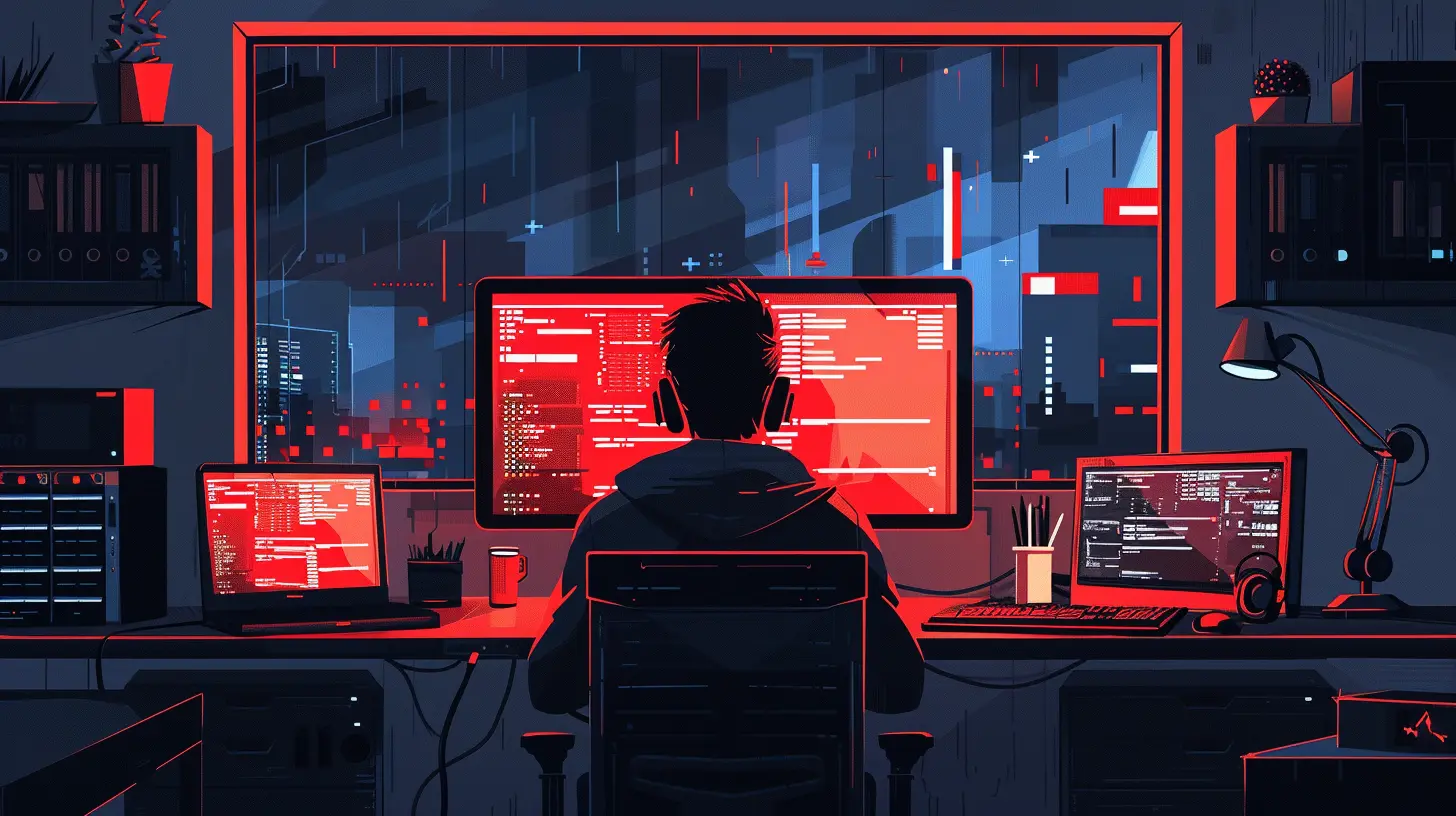The Role of Open Source in Cybersecurity Defense
23 November 2025
Let’s face it—cybersecurity is like a never-ending chess game. Hackers make a move, defenders counter. The rules constantly change, and the stakes? Well, they’re higher than ever. With the increasing complexity of cyber threats, wouldn’t it be nice if we all had a secret weapon? Spoiler alert: we do. It’s called open source.
You might think of open source as just a bunch of developers sharing code for free. But in the cyber defense world, open source is a powerhouse. It’s collaborative, transparent, and surprisingly effective at keeping the digital bad guys at bay.
In this article, we're going to break down the crucial role open source plays in cybersecurity. Whether you’re a techie, a business owner, or someone just trying to protect your digital life, you’re in for an eye-opener.
What Is Open Source, Really?
First, let’s clear the air. Open source means the source code of a piece of software is freely available for anyone to inspect, modify, and improve. Think of it like a community cookbook—everyone can contribute their secret recipes, tweak others’, and serve up a better dish.Popular open-source tools like Linux, Wireshark, and Metasploit have been staples in cybersecurity for years. But why is open source such a big deal in defending against cyber threats?
Transparency Equals Trust
One of the biggest selling points of open-source software in cybersecurity is transparency.When software is open source, it’s like leaving the hood of your car open. Anyone can look inside. No hiding buggy code or suspicious backdoors. This transparency invites experts around the globe to audit the code. If someone finds something fishy, they can flag it. That’s a level of scrutiny proprietary software usually doesn’t get.
With closed-source software, you're essentially trusting a black box. You can’t see what’s going on under the hood. That’s fine until a vulnerability gets exploited, and you realize you were driving a ticking time bomb.
Community Power: Many Eyes, Many Shields
Here’s the beauty of open source—it brings together thousands of brains instead of just one company’s engineering team.Imagine you’re trying to spot a needle in a haystack. Doing that alone? Good luck. But if you’ve got 1,000 people helping? That needle doesn't stand a chance.
That’s the way the open-source cybersecurity community works. Developers, researchers, and ethical hackers worldwide collaborate non-stop. If a flaw is found, you can bet someone’s already working on a patch. Fixes are faster, smarter, and more robust because they’re community-driven.
Faster Response to Threats
Cyber threats don’t sleep, and neither does the open-source world.In many cases, open-source projects can react to vulnerabilities or zero-day threats way quicker than commercial software vendors. Why? Because they don’t have to go through mountains of red tape before releasing a fix.
The response time can mean the difference between a minor issue and a full-blown breach. With open-source tools, users are not just passive bystanders—they can contribute to the solution. That’s like owning a fire extinguisher instead of waiting for the fire department.
Cost-Effective & Scalable
Let’s talk dollars and cents.Cybersecurity doesn’t come cheap. But open-source tools? They’re basically free to use, and they scale beautifully. That means businesses—especially smaller ones—can build solid cyber defenses without breaking the bank.
You’re not just saving money on licensing. You’re also tapping into a community that keeps these tools sharp, updated, and ready for action. For many organizations, that’s a game-changer.
Popular Open Source Tools Powering Cyber Defense
Alright, let’s get down to brass tacks. What are some real-life open-source tools making waves in cybersecurity?1. Snort
An open-source intrusion detection system (IDS) that analyzes network traffic in real-time. Think of Snort as your digital watchdog—it barks when something sketchy shows up.2. Wireshark
The go-to open-source packet analyzer. It lets you see what’s happening on your network at a microscopic level. It's like a magnifying glass for your data traffic.3. Suricata
A high-performance IDS/IPS and network security monitoring engine. Suricata is like Snort’s overachieving cousin—it handles complex rules and multi-threading.4. Metasploit Framework
An essential toolkit for penetration testers and ethical hackers. It allows security pros to simulate real attacks, helping organizations find and fix weak spots.5. OSSEC
A powerful host-based intrusion detection system (HIDS). It monitors log files, file integrity, and rootkit detection. OSSEC quietly works behind the scenes to keep servers safe.6. Kali Linux
A full-blown Linux distribution loaded with hundreds of security tools. It’s like a Swiss Army knife for security professionals.These tools aren’t just for show. Security teams around the world—from startups to government agencies—use these tools in their daily defense strategies.
Driving Innovation in Cybersecurity
One thing’s for sure—open source fuels innovation.Because the code is available to everyone, developers are free to experiment, iterate, and improve. That leads to quicker development cycles, fresh ideas, and cutting-edge features. You don’t have to wait years for a vendor to catch up. Innovation happens at the speed of community.
Even big tech companies like Google, Facebook, and Microsoft contribute to open-source cybersecurity projects. They know it’s the grease that keeps the wheels of innovation turning.
Challenges and Misconceptions
Now, is open source perfect? Nope, nothing is.Let’s clear up some common myths.
Myth 1: Open source is insecure.
Actually, it can be more secure than closed-source software. Remember, more people looking at the code = more chances to catch bugs.Myth 2: Support is non-existent.
While it’s true that open-source projects don’t always have traditional support, many have thriving communities and tons of documentation. And there are companies that offer paid support for open-source tools too.Myth 3: It’s too complex for non-techies.
Many open-source tools now come with user-friendly interfaces and robust documentation. Like anything new, there’s a learning curve—but it's not Everest.Open Source and Zero Trust Architecture
Zero Trust is the new buzzword in cybersecurity. It’s the “trust no one, verify everything” approach.Guess what plays really well with Zero Trust? You got it—open source.
With open-source tools, you can build custom, adaptable solutions that align perfectly with zero-trust principles. Can’t find a tool that fits your exact needs? Fork it and build your own. That’s the power of open source.
A Catalyst for Global Cyber Collaboration
In a world where cyber threats cross borders, collaboration is our best defense.The open-source community isn’t confined by geography or corporations. It’s global. It brings together experts from every corner of the planet to tackle shared threats. That’s powerful. That’s how we stay ahead.
It’s like joining an international task force where everyone’s speaking the same language—code.
Why You Should Pay Attention
Still on the fence about open source in cybersecurity? Here’s the bottom line.Open source gives you flexibility, visibility, and community-driven innovation. It puts the power back in your hands. Whether you’re running a company or just safeguarding your personal data, embracing open-source tools is like adding a loyal watchdog to your digital front yard.
In the cyber battlefield, open source isn’t just a strategy—it’s an ally. And in an age where new threats pop up daily, having as many allies as possible? That’s just smart.
Final Thoughts
Cybersecurity isn’t a one-and-done deal. It’s an ongoing journey. And open-source tools make that journey smoother, safer, and a heck of a lot more collaborative.So next time you're evaluating your cyber defenses, don’t overlook the magic of open source. It’s not just free software—it’s a philosophy, a community, and arguably one of the strongest shields in a cyber warrior’s arsenal.
Security is a shared responsibility. With open source, we're all in this together.
all images in this post were generated using AI tools
Category:
Open SourceAuthor:

Ugo Coleman

